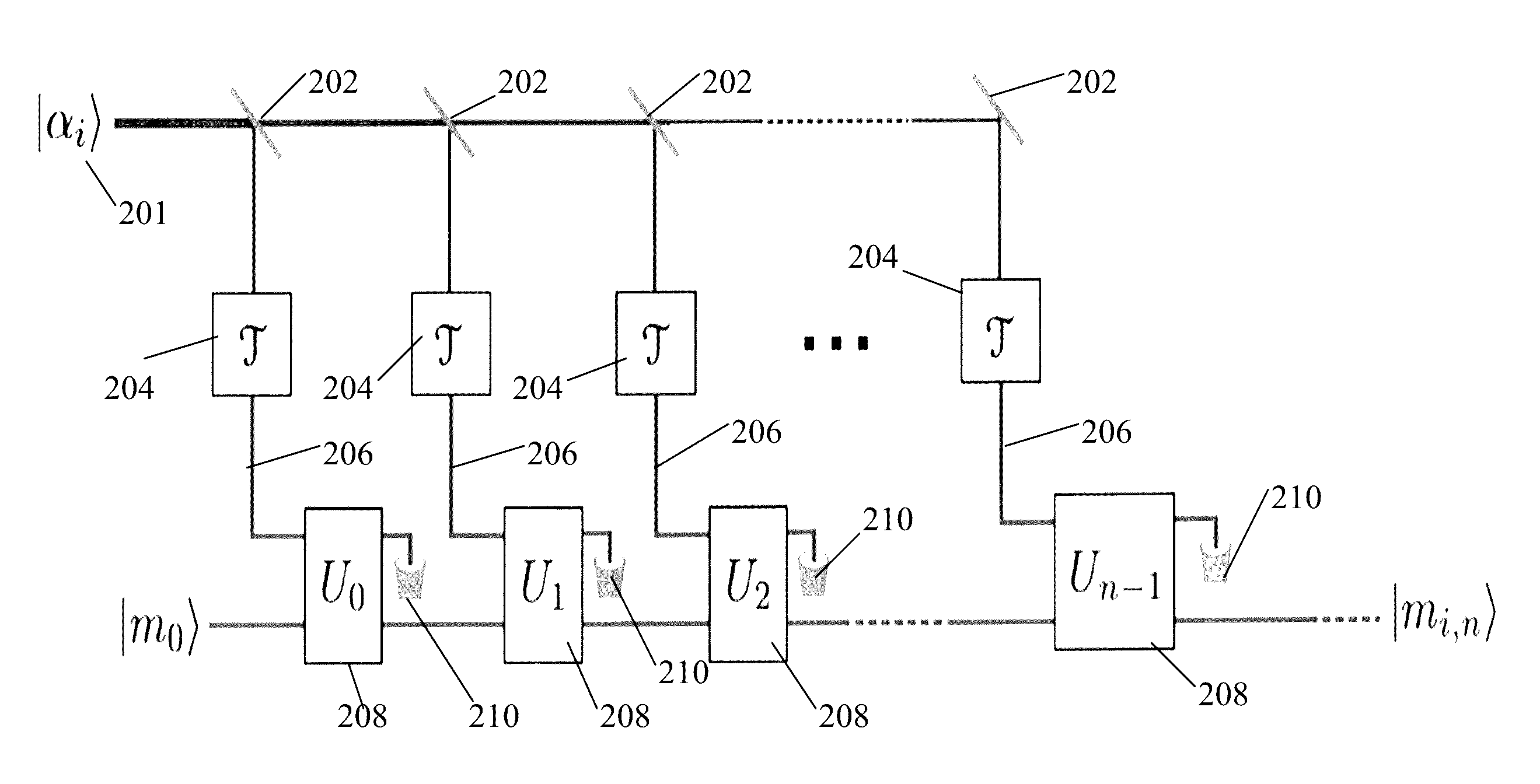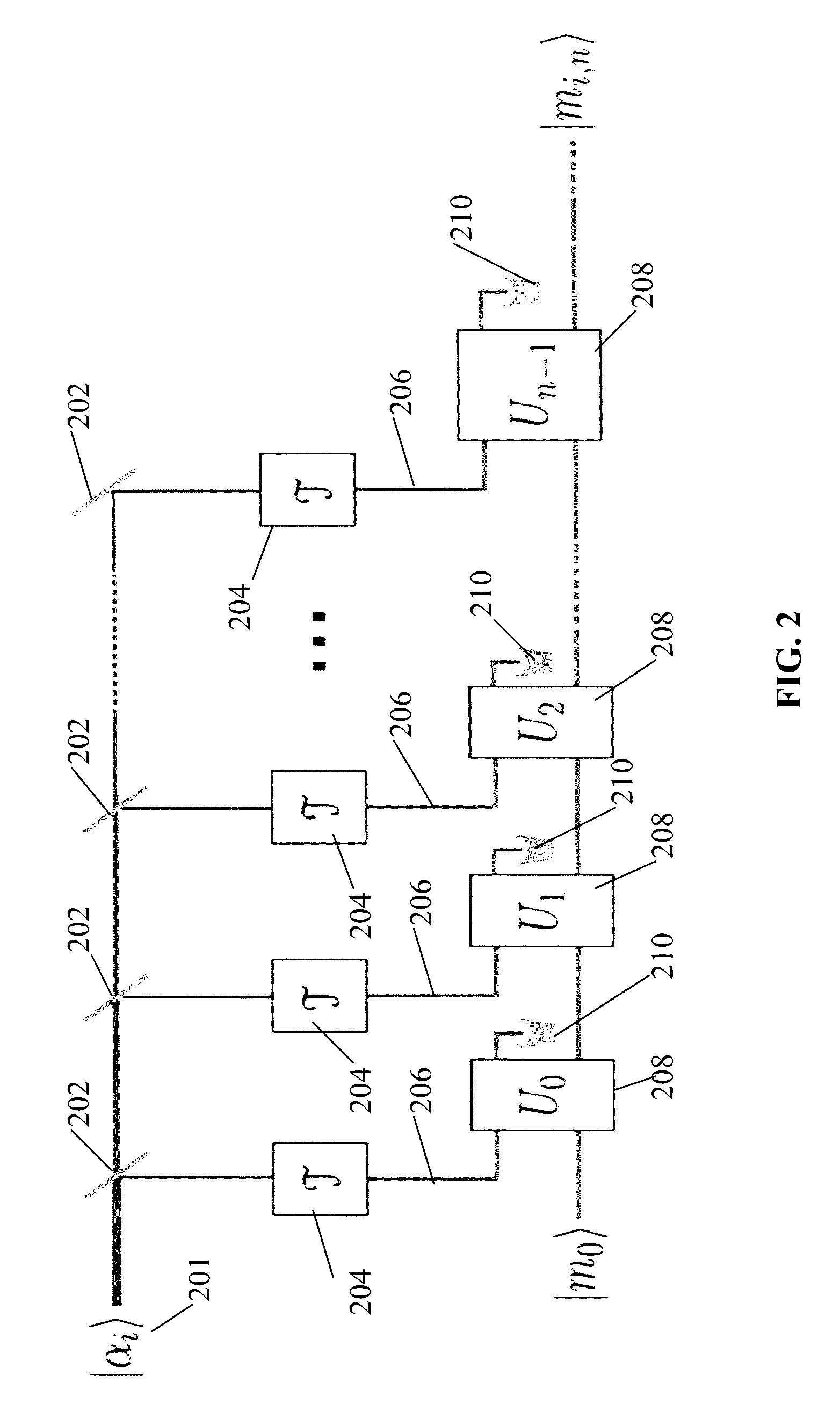Device and method for optimally distinguishing among an arbitrary set of coherent states of light
a technology of coherent states and devices, applied in the field of optimally distinguishing among an arbitrary set of coherent states of light, can solve the problems of imposing a fundamental limit on the ability to distinguish well between coherent states, limiting discrimination to have a finite minimum probability of error, and arbitrary states cannot be cloned
- Summary
- Abstract
- Description
- Claims
- Application Information
AI Technical Summary
Benefits of technology
Problems solved by technology
Method used
Image
Examples
Embodiment Construction
[0026]The present invention is directed to a method and device that optimally distinguishes between any states in a set of coherent state, such as a laser light.
[0027]In some embodiments, the present invention is a method and device that optimally distinguish between any states in a set of coherent states (e.g., laser waveforms). The invention splits the state into a large collection of identical states (“slices”) with much lower intensity (i.e., number of photons) and then compresses the information content of these slices, one slice at a time, into the memory of a quantum computer. With a sufficiently high number of slices (equivalently, with sufficiently faint slices), the quantum state of the slice is very well approximated by the state of a “q-bit” (quantum bit), and the optimal compression operations for the information in a discrete set of q-bit states with many copies (in this case, the slices of the coherent states) has been described by other authors elsewhere (see attache...
PUM
 Login to View More
Login to View More Abstract
Description
Claims
Application Information
 Login to View More
Login to View More - R&D
- Intellectual Property
- Life Sciences
- Materials
- Tech Scout
- Unparalleled Data Quality
- Higher Quality Content
- 60% Fewer Hallucinations
Browse by: Latest US Patents, China's latest patents, Technical Efficacy Thesaurus, Application Domain, Technology Topic, Popular Technical Reports.
© 2025 PatSnap. All rights reserved.Legal|Privacy policy|Modern Slavery Act Transparency Statement|Sitemap|About US| Contact US: help@patsnap.com



